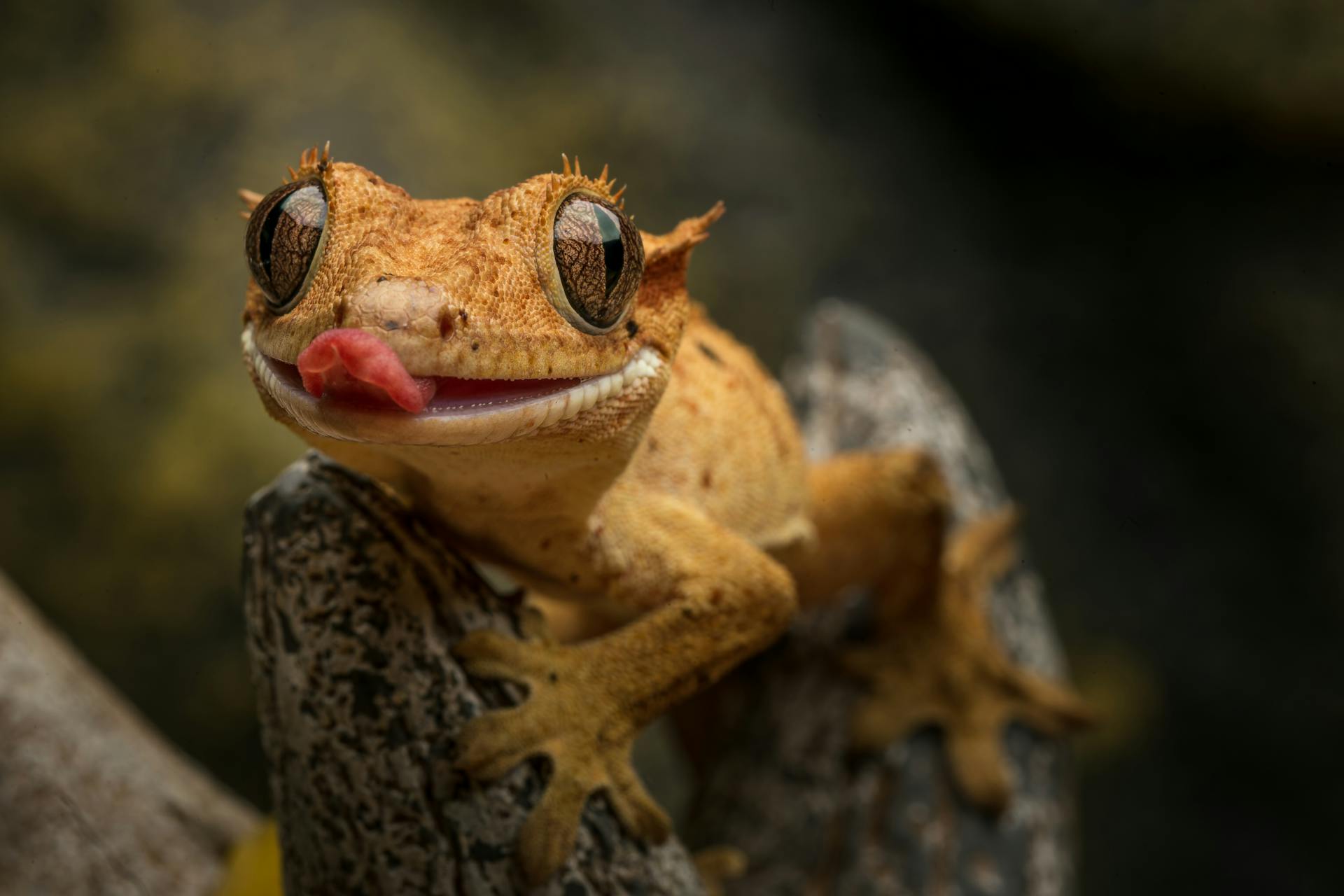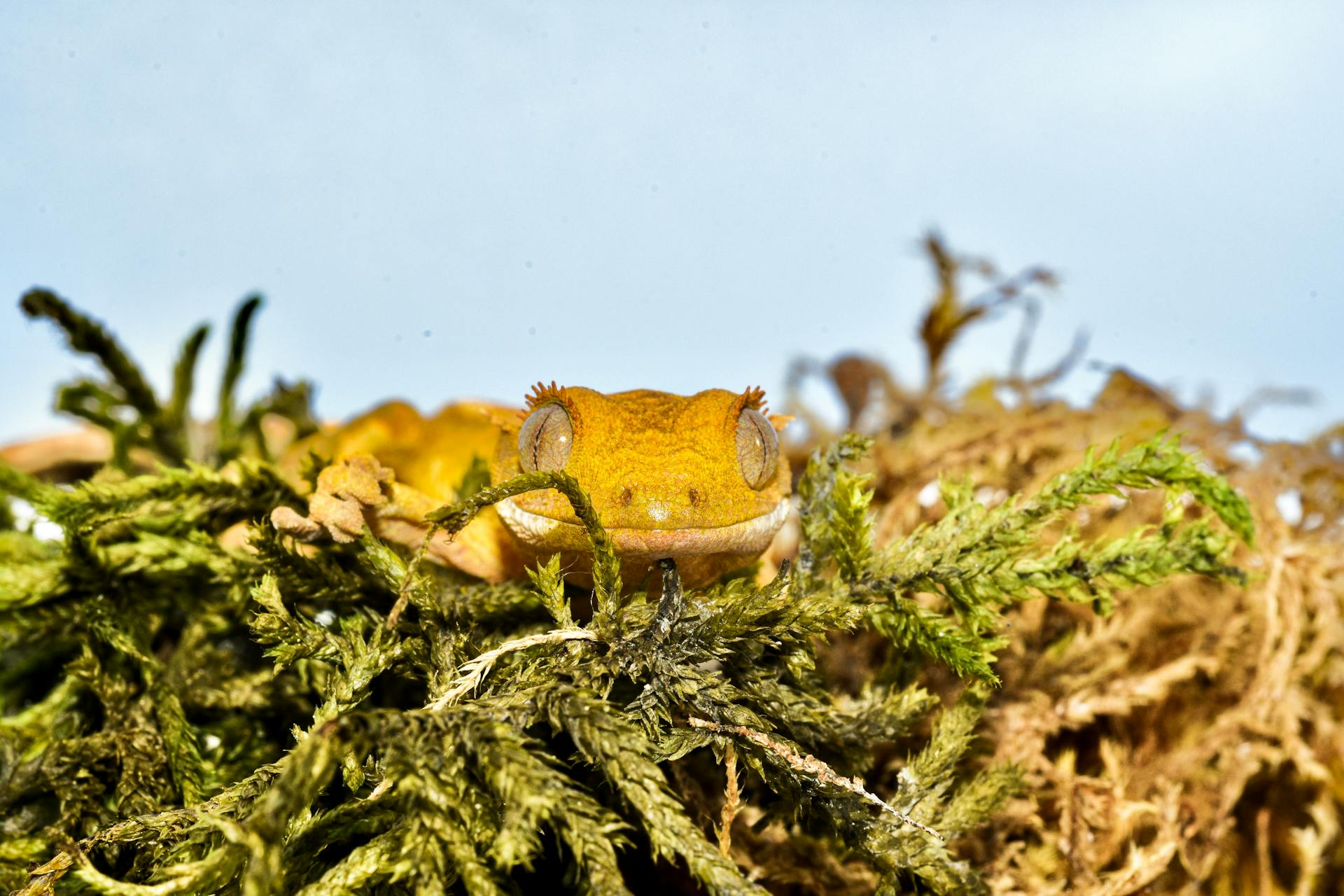Crested Gecko Care Made Easy: A Complete Guide for Beginners!
The Crested Gecko is a popular small reptile pet for many households, especially suitable for children and reptile beginners. Known for the unique “eyelash” crests around their eyes, these geckos are highly recognizable. Crested Geckos come in a variety of colors and patterns, with distinctive fuzzy crests extending from above the eyes to the neck and back. This article will introduce you to the Crested Gecko’s origin, behavior, habitat requirements, diet, and common health concerns.

Origin
The Crested Gecko originates from New Caledonia, an island nation near Australia. Once thought to be extinct, they were rediscovered around 1994. Since then, their popularity as pets has steadily grown.
Species Overview
- Common Names: Crested Gecko, New Caledonian Crested Gecko, Eyelash Gecko
- Scientific Name: Rhacodactylus ciliatus
- Adult Size: Approximately 7-9 inches (18-23 cm), including the prehensile tail
- Lifespan: 10-20 years
Behavior and Temperament
Crested Geckos are generally gentle but can be somewhat sensitive, so they require careful handling. They don’t usually enjoy being picked up, so it’s best to minimize handling. They may try to jump away when frightened, increasing the risk of injury. Unlike some other lizards, Crested Geckos cannot regrow their tails if they drop them when startled.
If threatened, Crested Geckos may give a gentle bite, which might surprise you but won’t hurt or cause bleeding. They enjoy climbing, and their unique toe pads allow them to move easily on vertical surfaces. Their prehensile tail further enhances their agility, and they are also excellent jumpers.

Ideal Habitat Setup
A 20-gallon (approx. 75 liters) tank is adequate for an adult Crested Gecko, though a larger enclosure is always better. As arboreal creatures, they are active and require ample vertical space for climbing, so a taller tank is recommended. Two or three Crested Geckos can share a 29-gallon (approx. 110 liters) tall tank, but it’s best to keep only one male per tank to avoid territorial conflicts.
Choose a glass terrarium with ventilation mesh or an all-mesh enclosure. Inside the tank, provide branches, driftwood, cork bark, bamboo, and vines in various heights and directions for climbing, along with durable live plants like ivy, pothos, dracaena, and ficus for hiding places.
Uneaten food and waste should be cleaned daily. Use reptile-safe disinfectants to thoroughly clean the tank and decorations at least once a month. Substrates may need weekly or monthly changes, depending on the material, to prevent bacterial buildup.
Temperature
As cold-blooded animals, all reptiles need temperature regulation. During the day, provide a temperature range of 72-80°F (22-27°C), with nighttime temperatures between 64-75°F (18-24°C). Crested Geckos can be stressed by high temperatures, so monitor the tank to avoid overheating. A low-wattage red night bulb is a good heat source and allows you to observe them at night. Avoid placing heating elements on top of the tank to prevent burns.
Lighting
Crested Geckos are nocturnal and generally don’t require special UVB lighting. However, some experts suggest low levels of UVB (around 5%) for overall reptile health. Keep in mind that additional lighting will increase the tank’s temperature. If you add lighting, ensure the gecko has a shaded area to retreat from the light.
Humidity
Crested Geckos need moderate to high humidity, ideally around 50-70%. Use a hygrometer to monitor humidity levels daily, and maintain humidity by regularly misting the tank with warm, filtered water. Depending on the tank setup, misting several times a day may be needed. Ensure proper humidity levels, especially during their most active hours at night. Consider an automatic mister or fogger if you’re often away during the day or unable to mist manually.
Substrate Choices
The choice of substrate in the tank is essential for your pet’s safety, ease of cleaning, and humidity retention. Coconut fiber bedding, moss, or peat is ideal. Although newspaper or paper towels can be used, they are less visually appealing. Since Crested Geckos might ingest substrate while hunting, consider using peat moss (alone or combined with coconut fiber) or paper towels if this is a concern. Paper towels are especially recommended for juveniles as they are more prone to substrate ingestion.
Gravel, while aesthetically pleasing, isn’t suitable as it’s difficult to clean. Avoid reptile sand and inorganic soil as substrates, as these can lead to accidental ingestion.
Diet and Hydration
Commercial gecko diets are the primary food source for Crested Geckos and the easiest way to ensure balanced nutrition. Supplement with crickets and other insects (e.g., roaches, waxworms, silkworms). Avoid feeding beetles as their shells are hard to digest. To fulfill their hunting instincts, offer multiple insects in a feeding session.
Insects should be slightly smaller than the gecko’s eye width and be gut-loaded before feeding. Sprinkle calcium/vitamin D3 powder on the insects three times weekly and use a multivitamin powder once weekly to boost nutrient intake.
Additionally, offer fruits a few times per week, such as bananas, peaches, apricots, papayas, mangoes, pears, and passionfruit. Ensure a shallow dish of fresh water is always available, though they may prefer drinking water droplets from misted leaves. Crested Geckos usually feed at night, so offer food in the evening. Juveniles should be fed daily, while adults need feeding three times a week.
Common Health Issues
Crested Geckos can experience several common health issues:
- Mouth Rot or Stomatitis: Symptoms include excessive mucus and swelling around the mouth.
- Respiratory Infections: Signs include wheezing or drooling.
- Skin Problems: Issues such as rashes or incomplete shedding due to insufficient humidity.
Buying and Adoption
Crested Geckos are widely available in the pet market and are loved for their gentle temperament and easy care. While they are sold in many pet stores, it’s best to purchase from reputable breeders. Prices typically range from $20 to $400, depending on color and pattern rarity.
When buying, ensure the Crested Gecko can climb freely, has a straight spine, and no visible protruding ribs or pelvis. Healthy geckos should be alert, with bright eyes, and a clean nose and vent area.
Frequently Asked Questions
- Are Crested Geckos good pets? Yes, they are easy to care for, gentle in temperament, and ideal for beginners.
- How long do Crested Geckos live? They typically live 10-20 years, with healthy individuals potentially living longer.